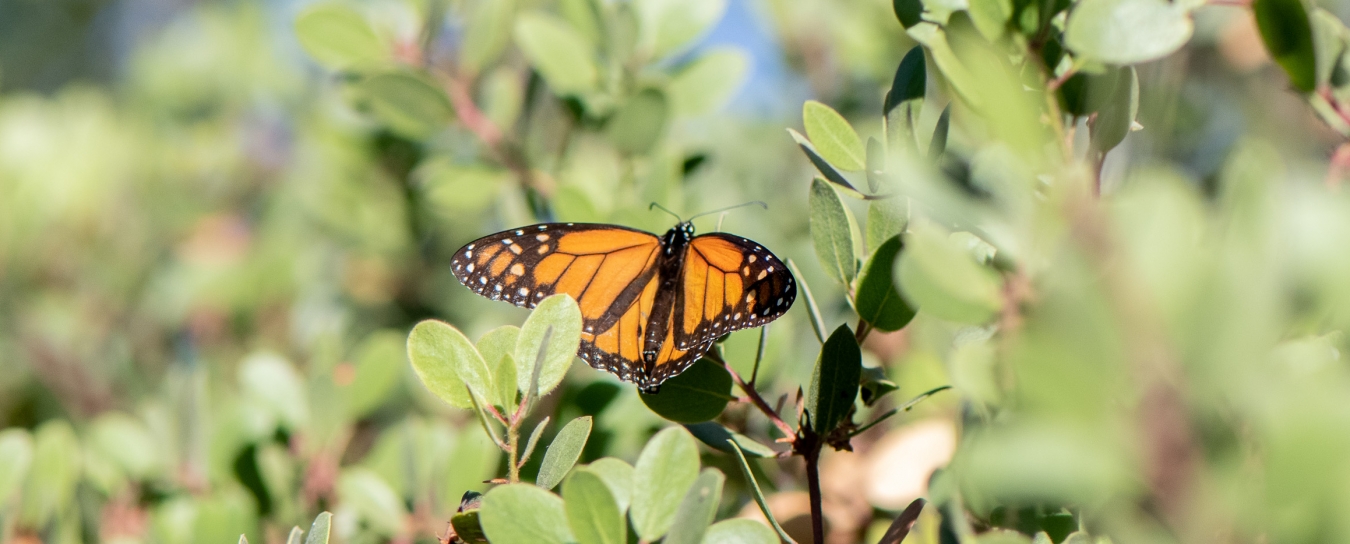
Invertebrates
See our handy guide to critters found in local homes and our Central Coast Butterfly FAQ. Browse the insects and other terrestrial arthropods we’ve identified. Check out local marine invertebrates, particularly bivalve mollusks and intertidal organisms.
- Anthropology
- Rocks & Fossils
- Invertebrates
- Vertebrates
- Botany
- Astronomy
- Fungi
- General
- Recently Asked
What kind of caterpillar is this?
Hello! I have a new insect for you. I think he was on the wisteria...so maybe a genista broom caterpillar?
Curator Response
Hi Cassie,
You're exactly right, this is a caterpillar of the Genista Broom Moth, Uresiphita reversalis (family Crambidae). That name refers to a plant introduced to North America called Genista that it sometimes feeds on. This widespread coast-to-coast insect has an alternate common name, and probably a better one, the "Sophora Worm," which refers to one of its favorite plants to eat, Sophora. Like the moth/caterpillar, Sophora is native to Western North America (though not to California).
I've observed these caterpillars in Santa Barbara before, feeding on Spartium junceum (Spanish Broom), another introduced plant. These distinctively colored critters construct a protective network of sparse webbing when young and often feed in groups, picking up toxic alkaloids from the plants they feed on. This gives the caterpillars chemical protection from predators, and such toxicity is consistent with their often bright-orange coloration—this warning system for toxicity is a phenomenon we call aposematism.
Once the caterpillars have had their fill, they pupate near the base of their food plant, usually over winter, then emerge as a small moth with brown forewings, orange hindwings, and a pointy head. You can see photos of them on Bugguide.net.
If you're botanically inclined, you may have noticed that all three of the plants mentioned above are shrubs belonging to the pea family, Fabaceae. Wisteria also belongs to that family, so your observation is consistent with this trend. While these caterpillars definitely have a known preference for Fabaceae, they are also known to feed on plants in other families, such as honeysuckle and crape-myrtle. If you're tiny and can't get around very quickly, sometimes it pays to not be too choosy about your food plant!
Keep observing,
Schlinger Chair and Curator of Entomology Matthew L. Gimmel, Ph.D.


